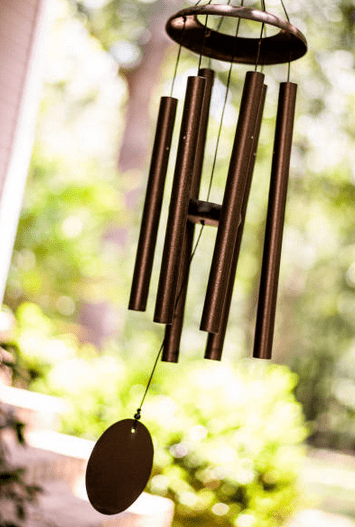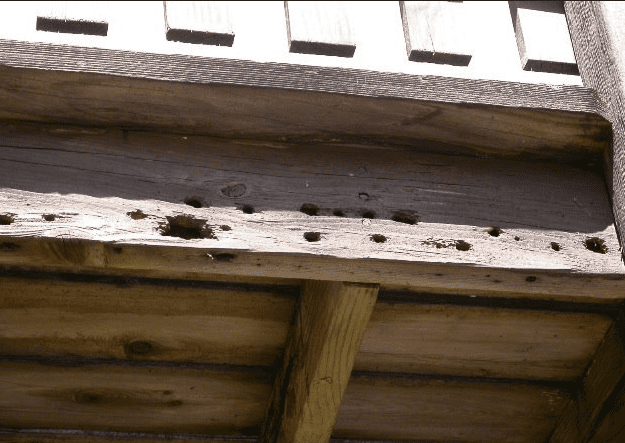It’s undeniable that bees play an important role in our ecosystem. They pollinate crops, contribute to food security, and help to keep natural balance and diversity. A bee colony may pollinate 300 million flowers every day. To know more about bees and their initial roles, you may read our article.
However, bees in your backyard and your home can be problematic since they can damage your house and cause danger for persons who have serious allergies. So, here are 9 tips to repel bees naturally, instead of killing them!
1. Honey bees and bumblebees
a. Vinegar
The first way to repel bees is to use vinegar. This basic household product can be used for multiple purposes, including repelling bees. Vinegar spray is an excellent natural method for repelling bees from your yard. It is not only a simple item to create, but it is also environmentally friendly because vinegar does not contain pesticides or hazardous chemicals.

You can use vinegar in various ways to deter bees from nesting. One option is to use a spray bottle. You need to mix water and vinegar in equal portions, then spray around the bee hive. Don’t forget to spray flowers on your doorstep or window sills. Bees will not tolerate this and will seek alternative places.
Alternatively, you can fill many cans with water and add several vinegar drops to those cans. Then, put them near the hive or in places where bees are drawn to repel them.
However, if you have a large number of bees, this natural method may not work.
b. Bee-deterrent plants
Bees may be drawn to aromatic flowers and vegetation. So, you may want to remove those plants or place them in the most distant part of your yard. And you can replace them with leafy vegetation or surround your yard with plants that repel bees and wasps.
This is an excellent approach to repel bees without killing or removing them.
Some of the most popular and potent plants that deter bees are mint, cloves, pennyroyal, eucalyptus, citronella, and neem. The cucumber is also a great option to deter bees. Its peel is acidic, which can keep bees and wasps away. It may sound simple, but it works perfectly fine.

You just need to slice a fresh cucumber and arrange the peels on an aluminum pie dish. Cucumber and aluminum react to form a foul odor that bees cannot tolerate.
Not only can foliage plants repel bees, but some flower plants can also do this. Marigolds and red germaniums are two typical examples. These two flower types don’t have much pollen, but they have an unpleasant odor to bees.
👁 398,158 views

▶ 1,034,201 plays

c. Garlic
Garlic has more uses than you think, one of them is an excellent natural way to deter bees! Garlic has a strong, spicy odor that doesn’t please bees and other insects.
To repel bees, apply garlic powder on their hives or in areas where bees usually stay in your house. However, you should never apply garlic powder directly to bees as this might kill them.

Garlic spray is another option. You will need to smash or mince two full heads of garlic, and put it in a half cup of hot water. Let the mixture soak for at least one night. Then pour the mixture into a spray bottle and discard the large garlic bits.
You can spray the liquid on flowers to stop bees’ food source.
d. Scents
The fragrance is the most effective technique to both attract bees to gardens and repel bees at the same time. There are some scents that bees don’t like or find disgusting. But these scents are appealing or pleasant to humans. The scents will repel bees and wasps from any place where you spray it without harming them.
Those fragrances are eucalyptus, peppermint, thyme, lemon, lime, and spearmint. Some oil like vegetable oil, lavender oil, olive oil, and citronella oil are also not bee’s favorites. Citrus is a good bumblebee deterrent.
You can use one or more essential oils with a substantial amount. Put them in a bottle to create a natural pesticide. With this mixture, you can repel bees in your closet, around doors and windows. You can also spray it everywhere you intend to spend time with family to prevent them from bees.

Don’t let this mixture get in your food or your eyes. Make sure not to apply raw essential oils to your skin.
You can dilute the mixture by adding water. In a spray bottle, add 2-3 tablespoons of liquid soap with water and shake until soapy. After that, put on a few drops of essential oils, like peppermint oil, and a pinch of cinnamon. Because the mixture is soapy, it can be sprayed on most household products.
For outdoor applications, add more soap to keep it stay in case it’s raining. As the water evaporates, the peppermint fragrance remains to deter bees. This mixture is even safe to use on plants.
e. Citronella candles
The next tip to repel bees is citronella candles. This is a perfect alternative method for those who can’t plant bee-repelling plants. The two methods have the same effect.
Moreover, you can easily find citronella candles in any store, supermarket, or candle shop. These candles are quite popular because they repel many insects, from bees to flies, wasps, and mosquitoes.

All you need to do is light a citronella candle close to the bee hive at night. This is the perfect time to do it because the majority of bees are in the hive.
The benefit is that you can quickly switch out the oil for a new fragrance. These candles are non-toxic and do not leave any traces. It is used to deter bees rather than to hurt them.
This is a fantastic strategy to repel bees while yet allowing them to do their jobs. However, if you have more severe infestations, you may need to do something stronger.
f. Cinnamon
Cinnamon is a highly common way to deter bees. Like citrus, cinnamon has a deterring effect on some species. This natural bee repellant has a strong odor that makes bees difficult to tolerate. If their hive smells like cinnamon, they will find another area to live in.
To repel bees, you can sprinkle ground cinnamon over their nest or put cinnamon sticks near or on it. You will need to do this for a few days to see the expected results. Don’t put too much powder, some bees will stuck inside. Remember, you want bees to go away, not to be dead.
To use this method, you have to be careful. Wear protective equipment, because some bees may sting you.
g. Use pool jets
Bees like pools. Water in the pool helps them to hydrate their larvae and keep the hive temperature stable. Saltwater and chlorinated pools are not tasty to us, but these are sweet to bees. If you have a pool in your yard, this could be an ideal place for these insects.

So, how to deter bees from the pool? Just turn on pool jets to repel bees from your swimming pool. This will cause ripples on the water’s surface. Bees see turbulent water as a danger indicator, they won’t land on your pool.
h. Dryer sheet
The dryer sheet is one of the best bee repellents. These things contain alcohol and soft ingredients, so they spread a strong odor. And bees don’t like this. To repel bees, hang dryer sheets in your garden. The sheets, on the other hand, will prevent the necessary aphids that feed nutrients to the vegetation.
i. Call a Professional
If you have an infestation in your yard, or if you and your family member are allergic to bees, all of the natural bee repellents above can’t help. Now you need professionals.
Bees can build nests in tight spots, such as under siding and other difficult-to-reach areas. You can’t handle it on your own, even if you feel able to do this. Hiring a professional with better equipment to transfer the beehive is the best you can do.

And you should hire beekeepers rather than pest exterminators. This is because they will keep these creatures alive, not kill them.
If you prefer, they can remove the bees and relocate them to another area of your yard. But if you don’t like it, they transport the bees to a safe and human-free area.
Beekeepers are the solution to achieving a win-win situation. You can keep bees away from your house while keeping them alive with their pollination jobs.
2. Carpenter bees
Carpenter bees are wood-boring insects that drill into wood to build their nests. Carpenter bees do not dwell in colonies or form part of a sophisticated social organization like honey bees and bumblebees. They live alone and are among the biggest native bee species in the US.
These bees aren’t picky about where they build their nests. They may decide to build their nest in an uncomfortable location, like the woodwork around your house, and ruin them. Here are some carpenter bee deterrents.

a. Paint your wood
Carpenter bees like natural wood above anything else. They don’t like painted or varnished wood because it makes drilling more difficult for them. So, simply varnishing or painting your wooden structures and surfaces like fences or tables will prevent carpenter bees.
Instead of untreated lumber, you should use pressure-treated lumber. If you don’t want to deal with the upkeep of paint, try synthetic materials like vinyl, Trex, or HardiePlank.
b. Bees repellent sound
The next way to repel bees is to use sounds and vibrations. This is a natural deterrent for carpenter bees.
Carpenter bees hate vibration and noise around their home. As a result, you can place speakers or a large wind chime near their nests. Anything that vibrates and makes noise when caught in the wind can also be used.

After a few days of constant loudness, the bees may decide to find another place to nest because of this disruption.
c. Fill the holes
These wood-boring bees can drill a new hole to make their nest. However, they can also be opportunistic and exploit existing crevices and depressions as beginning holes. To prevent bees from nesting, fill up any dips and cracks in wood surfaces
If wood bees have already made a home in your wood objects, you need to seal existing holes. Because they will repeatedly visit the same hole every year and cause further damage.

The best time to plug any holes is in late September when the majority of the bees have departed the nests. You can use a bee repellant to avoid trapping any stray bees in the tunnels.
When you’re certain that all of the bees have left, close the opening with wood putty or a dowel covered in wood glue. You can add another extra protection by varnishing or painting the surfaces.
d. Essential citrus oil
The next method to deter carpenter bees without killing them is to use essential oil. Carpenter bees, like many other insects, dislike the smell of citrus oil. They also hate almond oil. As a result, these serve as an excellent natural wood bee deterrent.
– Using oil: Mix oil and water and pour it into a spray bottle. In the early spring, spray the mixture on any vulnerable regions a few times each week. You should do this for several weeks for the greatest results. If the bees already build nests, a small amount of oil can be applied directly to the holes.
You can buy these oils at stores. With citrus spray, you can make it at home. All you need to do is boil sliced citrus fruit in water for 10 – 15 minutes, wait for it to cool off, and filter the mixture. And then pour it into a spray bottle. It’s a great homemade bee deterrent.
– Planting citrus or citrus-scented herbs (lemon verbena or lemongrass) near your area to repel bees.
e. Fake wasp nest
Carpenter bees will never make home in areas that have wasp nests. You can make a fake wasp nest and hang it under your house’s eave to repel carpenter bees. However, this way just stops bees from making a new nest. It doesn’t work for bees that already build nests in your yard.
f. Create a house for them
The way to protect your furniture isn’t always to repel bees. You can offer them a house instead. This will keep them away from your own wooden buildings.

You can put a few discarded wooden blocks in your yard. Or, you can create appealing pre-drilled bee houses and hang them in areas where the bees are. The nest can then be relocated to a tree or a solid post in your yard, far away from the house and wooden structures.
Carpenter bees come to this area every year. This is a humane way to repel bees.
3. Ground bees
As the name, ground bees, aka mining bees, nest underground. They’re placid and barely sting. The males may be more aggressive but they don’t have a stinger, meaning they can’t hurt you.
Like carpenter bees, these insects live a lonely life. The females mate with the males and then make nests underground to lay their eggs. You can wait for them to emerge and apply the tips below to repel them.
a. Water your lawn
If there’re small holes in your garden’s dry regions, you have ground bees. Watering your yard is one of the best ways to repel ground bees. These bees enjoy dry dirt with little vegetation because they can burrow easily into the ground.

That is why you should water your lawn regularly, especially in hotter, sunny seasons. This includes watering all potted plants, flower beds, and lawns.
b. Fill the holes
Some animals (rodents or rabbits) leave their underground tunnels, and ground bees can take over and use those burrows. To repel ground bees, you can block the holes by filling them with sand. You can also stack heavy materials such as bricks on top of them.
c. Plant vegetations
Plant grass, flowers, or dense vegetation in any sparse or empty parts of your yard. Vegetation roots make the burrowing more difficult, while long grasses cover the entrance to the burrows.

Alternatively, you might cover the surface with heavy mulch. This functions as an additional cover to the ground. This keeps the soil damp and makes it hard for the insect to burrow in.
d. Use natural scents
Natural scents can repel bees. You can spray or sprinkle cinnamon, coffee grounds, ground garlic powder, or cucumber peels in locations where ground bees congregate.
Vinegar and essential oils (peppermint oil, clove, eucalyptus, cedarwood, cinnamon, or citronella oil) can also be used to deter ground bees. To use these bees repellent sprays, you need to mix them with water and spray around the holes.
e. Let them be
Ground bees only make nests in your yard for 2 – 4 weeks. So if you don’t have a serious infestation, you can simply wait for them to emerge. This approach will enable them to continue reproducing and pollinating.

4. Conclusion
Because bees are crucial to the ecosystem, harming them is not encouraged. These insects only attack when threatened, so don’t freak out. There are numerous natural bee repellents, such as using vinegar, cinnamon, natural spays, candles, or planting bee-repelling plants. So, the next time you see a few bees in your place, don’t use hazardous chemicals.
– (Outdoor) ultrasonic bee repellents do not work, despite the claiming of manufacturers. The device can’t remove or repel bees as well as other insects from your house, your patio, or your yard. You can see details here.
5. How to repel bees infographic
Share this Image On Your Site

References:
- Why Bees Are Important and Why We Need to Protect Them – https://www.fantasticpestcontrol.co.uk/bees/how-to-get-rid-of-bees-naturally/
- How to Stop Carpenter Bees: https://www.gardenbetty.com/carpenter-bees/
- How to get rid of ground bees: https://www.homesandgardens.com/gardens/how-to-get-rid-of-ground-bees

